Call for Abstract
Scientific Program
13th International Conference on Optics, Photonics & Laser, will be organized around the theme “Unlock The Physics: Explore and reveal the systematic developments in Lasers, Optics & Photonics during COVID-19”
Euro Optics 2020 is comprised of 20 tracks and 0 sessions designed to offer comprehensive sessions that address current issues in Euro Optics 2020.
Submit your abstract to any of the mentioned tracks. All related abstracts are accepted.
Register now for the conference by choosing an appropriate package suitable to you.
Classical optics is divided into two main branches: geometrical (or ray) optics and physical (or wave) optics. In geometrical optics, light is considered to travel in straight lines, while in physical optics, light is considered as an electromagnetic wave. Physical optics is the study of the wave properties of light, which may be roughly grouped into three categories: interference, diffraction, and polarization And In physical optics, light is considered to propagate as a wave. This model predicts phenomena such as interference and diffraction which are not explained by geometric optics. The speed of light waves in air is approximately 3.0×108 m/s (exactly 299,792,458 m/s in vacuum).
Nano-optics is the study of optical phenomena and techniques on the manometer scale, that is, near or beyond the diffraction limit of light. It is an emerging field of study, motivated by the rapid advance of Nano science and nanotechnology which require adequate tools and strategies for fabrication, manipulation and characterization at this scale.In Principles of Nano-Optics the authors provide a comprehensive overview of the theoretical and experimental concepts necessary to understand and work in nano-optics. With a very broad perspective, they cover optical phenomena relevant to the nanoscale across diverse areas ranging from quantum optics to biophysics, introducing and extensively describing all of the significant methods.

Optical Imaging is the method in which light is being used to get the investigational imaging of the medical operations. Basically, optical imaging is of two types which are diffusive Imaging systems and ballistic imaging system. Some of the main examples are scanning laser ophthalmoscopy, optical coherence tomography, optical microscopy and endoscopy, spectroscopy.
- Digital Optics for Immersive Displays
- Unconventional Optical Imaging
- Optical Micro- and Nano metrology
- Optical Sensing and Detection
- Imaging in Biology and Medicine

Photonics is an area of study that involves the use of radiant energy (such as light), whose fundamental element is the photon. Photonic applications use the photon in the same way that electronic applications use the electron. Devices that run on light have a number of advantages over those that use electricity.Applications of photonics: Applications of photonics are ubiquitous. Included are all areas from everyday life to the most advanced science, e.g. light detection, telecommunications, information processing, photonic computing, lighting, metrology, spectroscopy, holography, medicine (surgery, vision correction, endoscopy, health monitoring), bio photonics, military technology, laser material processing, art diagnostics (involving InfraRed , Reflectography, Xrays, UltraViolet fluorescence, XRF), agriculture, and robotics.
These are the optics which belong to the branch of optics and photonics which uses light controlling components to get the images of the celestial objects in the space. The perfect example for this would be a telescope.
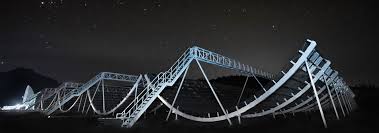
Geometrical optics, or ray optics, is a model of optics that describes light propagation in terms of rays. The ray in geometric optics is an abstraction useful for approximating the paths along which light propagates under certain circumstances. Three basic laws: The law of rectilinear propagation (transmission). ... When a ray of light is reflected at an interface dividing two optical media, the reflected ray remains within the plane of incidence, and the angle of reflection θ r equals the angle of incidence θ i.
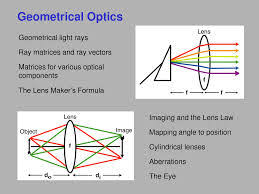
Basic Principle of Interferometer. Interferometer is a precise instrument for flow visualization. The variation of refractive index of the flowing gas with density is the basic principle used in thses system. The principle of interference of light waves is used.
- Operation of Interferometer: Light rays from a source are collimated with a lens L1. That is, the light rays become a parallel beam of rays when they come out of the lens L1.
- This collimated light rays are then split by a beam splitter B1. The two beams traverse at right angles to each other.
- That is the beam
There are many Interferometers
Laser medicine consists in the use of lasers in medical diagnosis, treatments, or therapies, such as laser photodynamic therapy, photo rejuvenation, and laser surgery.While the history of laser begins in 1951, the first medical application is reported by Goldman in 1962. In cardiovascular surgery McGuff first used a Ruby-Laser in 1963 for the experimental ablation of atherosclerotic plaques. After a long time of investigations and new developments in laser technology first clinical applications were performed by Choy and Ginsburg in 1983. Since that time the effectiveness of laser angioplasty in coronary and peripheral vessel is investigated in several clinical trials and first results are encouraging, so that laser is about to find its place in the treatment of cardiovascular diseases too.
Light, like radio, consists of electromagnetic waves. The major difference between the two is that light waves are much shorter than radio waves. The use of electromagnetic waves for long-distance communications was the beginning of an industry known first as wireless and later as radio. This industry was the foundation for electronics, which brought the world so many fascinating technologies.
There are four types which are: solid state, gas, dye, and semiconductor. The characteristics of each type will be described. Solid State Lasers employ a lasing material distributed in a solid matrix. One example is the Neodymium: YAG laser (Nd:YAG).
- Solid-state laser: A solid-state laser is a laser that uses solid as a laser medium. In these lasers, glass or crystalline materials are used
- Gas laser: A gas laser is a laser in which an electric current is discharged through a gas inside the laser medium to produce laser light. In gas lasers, the laser medium is in the gaseous state
- Liquid laser: A liquid laser is a laser that uses the liquid as laser medium. In liquid lasers, light supplies energy to the laser medium.
- Semiconductor laser: Semiconductor lasers play an important role in our everyday life. These lasers are very cheap, compact size and consume low power. Semiconductor lasers are also known as laser diodes.
Laser based 3D scanners use a process called trigonometric triangulation to accurately capture a 3D shape as millions of points. Laser scanners work by projecting a laser line or multiple lines onto an object and then capturing its reflection with a single sensor or multiple sensors.
Types of 3D Scanners and 3D Scanning Technologies:
- Short Range 3D Scanners Short Range 3D scanners typically utilize a Laser triangulation or Structured Light technology.
- Laser based 3D Scanners Laser based 3D scanners use a process called trigonometric triangulation to accurately capture a 3D shape as millions of points. Laser scanners work by projecting a laser line or multiple lines onto an object and then capturing its reflection with a single sensor or multiple sensors.
Benefits of 3D Laser Scanners:
- Able to scan tough surfaces, such as shiny or dark finishes
- Less sensitive to changing light conditions and ambient light
- Often more portable
- Simpler design – easier to use and lower cost
Silicon photonics is the study and application of photonic systems which use silicon as an optical medium. The silicon is usually patterned with sub-micrometre precision, into microphotonic components. These operate in the infrared, most commonly at the 1.55 micrometre wavelength used by most fiber optic telecommunication systems Fields within organic photonics include the liquid organic dye laser and solid-state organic dye lasers. Materials used in solid-state dye lasers include.
Advantages: Its great advantage is that it can be manufactured just like normal computer chips but with patterned silicon to transmit data-carrying laser signals. Able to carry more data while consuming less power and without heating up or causing any degradation in signal, silicon photonics will disrupt a range of technologies.
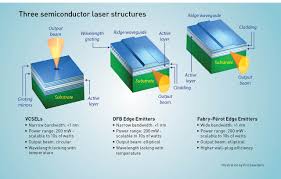
Process automation is today in the largest demand on the industrial market, which must meet very high production requirements and adapt to an increasingly aggressive competitiveness, in which time often plays a fundamental role. The most important consequence of this is the search for high performance tools and technologies that can adapt to different needs. When we speak of efficiency and flexibility in the world of Laser Marking and its infinite applications, we certainly place fiber lasers in first place. In today's market, these are by far the most used in companies that use this technology
Advantages of Fiber Lasers:
- No accessory optical devices
- Compactness
- Beam quality
- Durability
- Speed
- Energy savings

Photonic crystals are periodic dielectric structures that are designed to form the energy band structure for photons, which either allows or forbids the propagation of electromagnetic waves of certain frequency ranges, making them ideal for light-harvesting applications (Maka et al., 2003).
Applications: Photonic crystals are attractive optical materials for controlling and manipulating light flow. One dimensional photonic crystals are already in widespread use, in the form of thin-film optics, with applications from low and high reflection coatings on lenses and mirrors to colour changing paints.
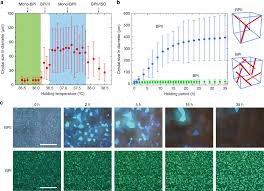
Materials, structures, phenomena and devices that are still in an investigative stage, or that are not yet targeting specific application requirements. Novel materials and material combinations and structures that are enabling new functions or science, and nanophotonic structures. Potential examples include (not limited to) low dimensional structures, amorphous or disordered materials, graphene, complex oxides, photonic crystals, antennas, gratings, subwavelength structures, and plasmonics and their hybrids.
An integrated circuit or monolithic integrated circuit (also referred to as an IC, a chip, or a microchip) is a set of electronic circuits on one small flat piece (or "chip") of semiconductor material that is normally silicon. The integration of large numbers of tiny MOS transistors into a small chip results in circuits that are orders of magnitude smaller, faster, and less expensive than those constructed of discrete electronic components. The IC's mass production capability, reliability, and building-block approach to circuit design has ensured the rapid adoption of standardized ICs in place of designs using discrete transistors. ICs are now used in virtually all electronic equipment and have revolutionized the world of electronics. Computers, mobile phones, and other digital home appliances are now inextricable parts of the structure of modern societies, made possible by the small size and low cost of ICs.
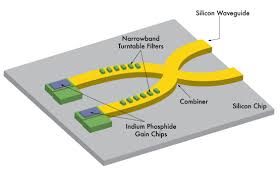
The subcommittee on Semiconductor Lasers solicits papers on recent advances in the design, fabrication, and characterization of laser sources based on carrier injection in semiconductor materials. Topics of interest range from stand-alone laser diodes to optical transmitters to on-chip light sources and cover all relevant spectral ranges. Different types of semiconductor lasers, including those featuring new designs, materials and processing, which target various applications, from high-power sourcing to optical sensing to optical interconnects, all are within the scope of this subcommittee, with a specific focus on:
• High-power lasers and laser arrays
• Visible and short-wavelength lasers
• Long-wavelength and quantum cascade lasers
• Vertical cavity and other surface-emitting lasers
• Optical communication lasers and transmitters
• On-chip laser sources for photonic integrated circuits
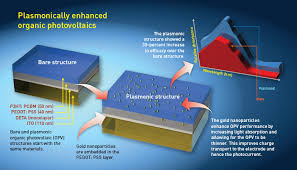
The word LASER stands for Light Amplification by Stimulated Emission of Radiation. A laser is a device that emits a concentrated beam of photons, which are the basic units of electromagnetic radiation. The applications of laser radiation in the nanotechnology are ranging from fabrication, melting and evaporating. The combination of laser and nanotechnology in the field of cancer treatment has made a good progress over the year. There are many application of laser in the nanotechnology which will be discussed in detail in this section
The subcommittee on photonic materials science and technology solicits papers in all aspects of photonic materials, including materials science and technology, material growth and synthesis, heterogeneous integration, material characterization, and integration architectures. The subcommittee welcomes submissions in, but not limited to, the following areas:
- Epitaxial growth of semiconductor materials, including 2D and 3D growth processes, quantum dots and dashes, nanowires, nanotubes, nanoneedles, and other types of nanostructures, etc.
- Novel deposition and/or growth techniques for photonic materials.
- Structured and engineered materials systems, such as periodic and aperiodic structures, photonic crystals, plasmonics, metamaterials, and metasurfaces, etc.
The implementation of photonics in space presents unique functional and environmental challenges. This symposium will highlight recent efforts to develop photonic components and systems that meet growing demands for high-rate communication, accurate timing standards, precision navigation, and gathering of scientific data from low-Earth orbit to deep space.
